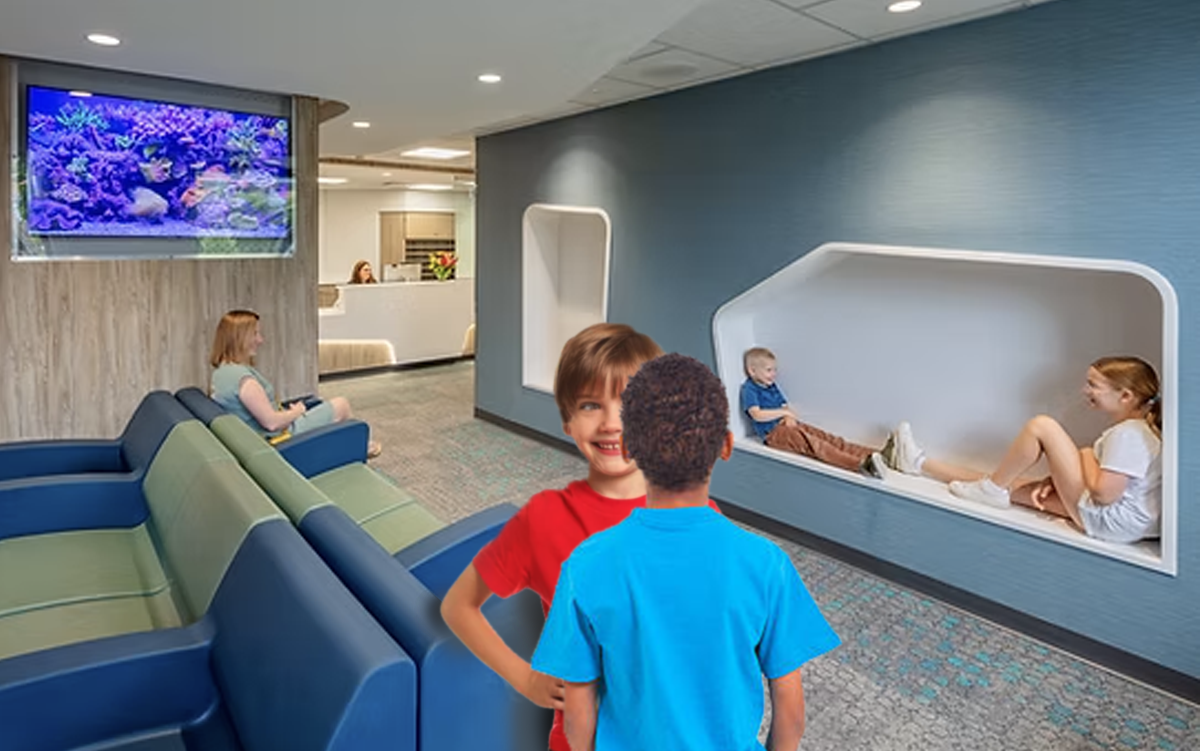

Exploring the Benefits of Pediatric Mental Health Urgent Care Centers

With relatively little fanfare, the Brighter Days Pediatric Mental Health Urgent Care Center in Western New York opened its doors last June, giving those younger than 18 the ability to get care with no appointment.
The center, which is part of Golisano Children’s Hospital (GCH), serves walk-in patients from noon to 7 p.m. seven days a week and treats as many as 3,000 patients a year. Its 15 patient rooms are staffed by 30 caregivers, including mental health counselors, social workers, nurses, psychologists, case managers and support staff.
The family-centered clinic also is the only one of its kind outside the New York City region, giving greater access to care at a time when it is badly needed, Michael Scharf, M.D., psychiatrist-in-chief at GCH, noted in the report about the center’s launch.
Meeting Patients Where They Are
Across the nation, more and more hospitals and health systems are expanding access to treat the rapidly growing numbers of children and adults in crisis who need mental health services. More than 20 mental health urgent care centers had opened in the last year from Colorado to Virginia, notes a Wall Street Journal report from April 2024.
Sites like these are starting to change the landscape of mental health treatment, offering another important option in the care continuum.
In addition, urgent psychiatric assessment, treatment and healing units, mobile crisis teams and other efforts are offering prompt assistance and critical referrals for ongoing care.
Behavioral health urgent care clinics are designed to fill critical gaps in nonemergency mental health services, providing rapid access to assessment and short-term mental health treatment. Patients can either walk in or schedule a same-day appointment, making it easier to access help when it’s needed most.
The Growing Need for Urgent Access Points
Anxiety disorders were the most prevalent mental health diagnosis in 2023, accounting for 18.3% of the 10 most common mental health diagnoses tracked, with generalized anxiety disorder and unspecified anxiety disorder leading the way, data from Definitive Healthcare show. They were followed by depressive disorders and substance-use disorders.
The Children’s Hospital Association also reported a substantial rise in visits to emergency departments (EDs) for mental health treatment among children during the pandemic compared to pre-pandemic levels, including cases concerning self-harm and suicide. Demand for emergency behavioral health services has remained elevated since the peak of the pandemic and many continue to struggle with worsened mental health, notes the Definitive Healthcare report. Many patients who need nonemergency care often turn to EDs because other access points to behavioral health care may not be available.
Hospitals and health systems are stepping up to meet the need for greater access to behavioral health. SSM Health, based in St. Louis, opened its first mental health urgent care center in 2020 to help alleviate the pressure on EDs, with a second clinic following in 2024. Collaborating with various community partners, these centers provide a place where people in crisis can receive same-day professional care.
Lurie Children's Hospital of Chicago offers mental health urgent care through its immediate care locations, including a virtual option. It also has a dedicated inpatient psychiatric services program for more intensive needs. For urgent mental health needs, families also can use the virtual immediate care service, which can assess the situation and escalate care if necessary.
Report Cites 3 Benefits of Mental Health Urgent Care Centers
The Definitive Healthcare report highlights the following benefits:
1 | Immediate Access to Care
Many people seeking mental health care in traditional settings often encounter long wait times, sometimes stretching for months, which can delay the support they need and exacerbate psychiatric conditions. In addition, 53% of psychologists reported that they did not have openings for new patients, according to the American Psychological Association’s 2024 Practitioner Pulse Survey.
2 | Connecting Patients to Ongoing Care
Beyond crisis intervention, these clinics can play a role in connecting patients to ongoing treatment for mental health or substance-use disorders. After an initial assessment and stabilization, clinicians can refer individuals to therapists, psychiatrists and community resources, ensuring that they receive the continued support they need.
3 | Easing Stress on Emergency Departments
About 8% of ED cases are related to mental health issues. At the same time, many patients who need nonemergency care often turn to EDs because other access points to behavioral health care may not be available. By offering readily available nonemergency mental health care in urgent care centers specifically designed for these needs, health systems can help both patients and mental health providers, the report concludes.
Learn More
Visit the AHA Behavioral Health website to access a wealth of resources, including reports on child and adolescent mental health, rural behavioral health issues and more.



